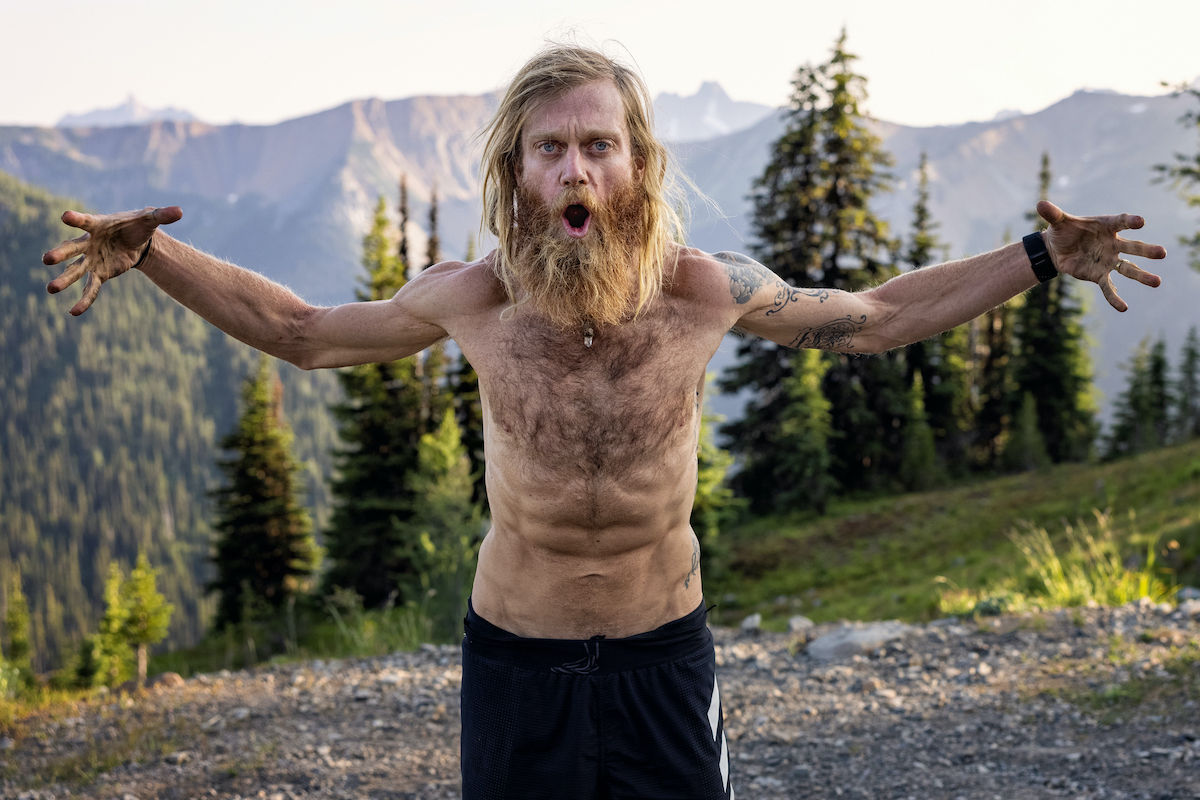Timothy Olson recently set the men’s supported fastest known time (FKT) for the Pacific Crest Trail (PCT), one of the longest trails in North America and an FKT premier route. Over 51 days, 16 hours, and 55 minutes, the adidas Terrex athlete ran 2,653 miles, covering 50-plus miles per day to complete the route. Running in supported style, crewed by his wife Krista, two boys Tristan and Kai, father-in-law Bob Loomis, and coach Jason Koop, Olson completed an incredible feat of endurance, one that, he said, changed him immensely — physically and spiritually. Besting the FKT formerly held by Karel Sabbe (in 52 days, 8 hours, 25 minutes) was an endeavor years in the making. The idea was born during Olson’s early running years in Oregon, was nurtured by his self-exploratory desire to dig deep into his psyche, and came to fruition after long COVID-19 delays, fire re-routes, and a whole lot of “small daily miracles.” In this interview, Olson dives deep into the story of his transformative PCT journey.
[Editor’s Note: This interview has been edited and condensed for brevity and clarity.]

Timothy Olson on the Pacific Crest Trail. All photos: adidas Terrex
On His Starting Interest in the Pacific Crest Trail
When I got into ultrarunning back in 2009, I got to really understand the Pacific Crest Trail. My first race was on the Pacific Crest Trail. I started helping out with trail work around Ashland, Oregon, and we would work on the PCT. Eventually, the house I bought in Ashland, there was a trail that led from my house to the Pacific Crest Trail. It was something that kept growing over the years of running. I remember going for a run with some of the really talented runners there in Ashland, Hal Koerner and Ian Torrence, and telling them that I wanted to do the Pacific Crest Trail one day. They said, [I should do] shorter distances [first]. The trail is something that’s just been burning inside for a very long time.

On the Need for Connection and Transformation
I’ve always used trail running as self-exploration. I’ve always thought of trail running as therapy on the trail. Of getting to work on your shadows, the things that you don’t exactly want to bring out and show everyone. I feel like out on the trail’s a really great time to be working on those inner demons. I already knew how deep 100-mile races took me and I was curious. Where else can this go? Over the last few years, we’ve had some miscarriages, and some loss in the family, lost my grandparents the last couple years, a couple to COVID-19, and life changes. Doing [the trail] supported and as a family was really to go experience this trail together and to heal along the way. Because when I say trail running has been therapy, it’s really healed me, and it just integrated things from my past into being who I am and loving who I am all the time, not just when I went to race or had a good training day. That’s what this journey was.
It’s been absolute insanity in this world, and I was hoping that this would be something to really uplift people, to say, we’re getting through this COVID-19 [and] fear that’s been surrounding the world. And, you know, connecting with people again, and healing through this process. A lot of people have been stuck in their house and losing loved ones, community, interaction, and connection with people, [that] has been really hard.
When I started the PCT, I opened it up as a ceremony of going into this really sacred space. I wanted to honor all the people who have come before me. That was the point of the ceremony, just opening my heart for whatever this experience will bring. This was supposed to be a journey of hope. I set a lot of intentions for years prior to this, working toward this goal. We all are trying to bring about community through social media, through connecting online. I wanted to tell a story of hope, of hitting rock bottom and having things happen in your life that aren’t the best life scenario. But you can turn that around. You can get up off the ground when you fall, dust yourself off, and continue on. You can be triumphant, you can reach for your biggest dreams, and you can go for it.
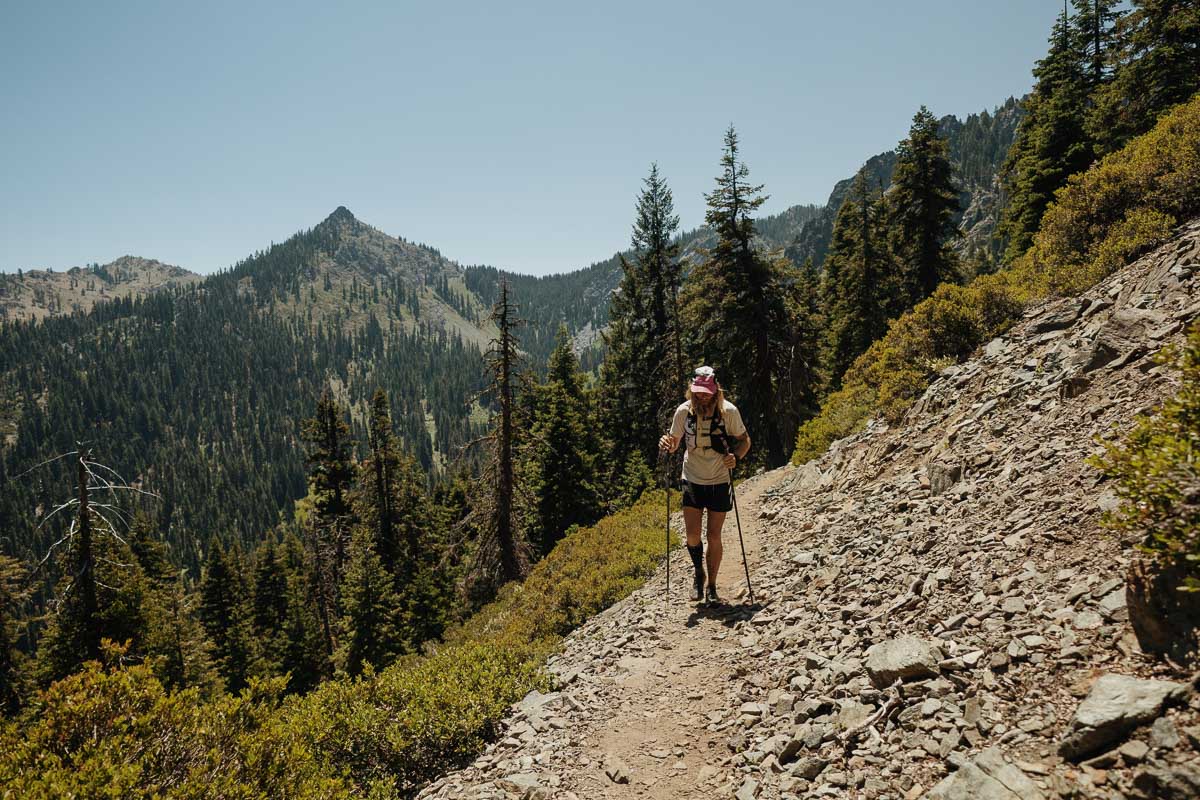
On Preparation and Roadblocks to the Journey
The last few years of being in Costa Rica, I spent a lot of time meditating. It’s been my whole life prepping me for this. I’m grateful that I was ready for the task. I knew that it was going to be hard, and we were going to have lots of ups and downs along the way. We’ve been planning to do this for years. We brought it up to [my sponsor] adidas three years ago, and we were planning to do it last year. And then with COVID-19, it wasn’t the time for it. I wanted this to be really positive for everyone involved.
These last few years, I’ve really been trying to get my mind space right. Even just hanging out with my kids and being more present with them. I’ve had a lot of changes — internally, personally, mentally. I feel like that really helped me as I went into this challenge. Even doing it last year, compared to this year, I felt so much more prepared this year mentally, for whatever came my way. I knew that I couldn’t plan or prepare for everything that was going to come.
The preparation, we’ve been planning for this for years mentally, and then the logistics were a nightmare. Because there are so many logistics and different roads and ways of doing this, especially to do it supported, we spent months trying to dissect [the route]. We took [all the] information, made spreadsheets. We had everything as dialed in as we could, but things just arrived. There were lots of road closures. We had to adapt to all the changes.
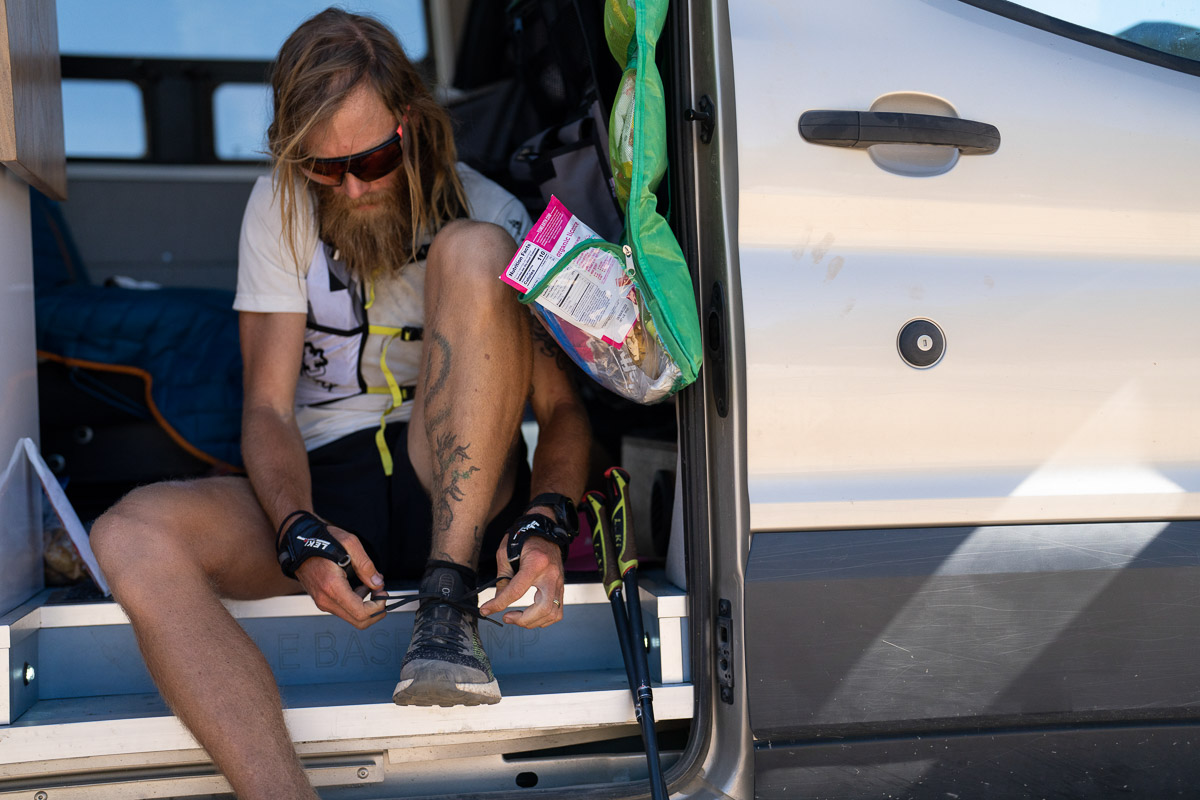
On Starting the Effort
First, I had to get my permit, and we got it for June 1. A couple years ago I was planning on June 15, and it was definitely dependent on fires and snowpack. I wanted to go through the Sierra Nevada when it wasn’t too icy. It was also a big thought process of not crossing too many rivers that were really rushing. It worked out, perfect timing. Even starting June 1 over June 15 [worked out] because fire season is coming sooner and sooner. It was right around July 1 or even in June still when the fires started around Mount Shasta [in Oregon]. [I’m] grateful we started when we did. Everything worked out best case was one of the mantras. I’d say, “Everything is working out best-case scenario.”
On Re-Routing and Staying True to the PCT
I don’t know all the ins and outs, because my coach and Krista did a lot of the re-routes. What we did is we communicated really well with the PCT Association and Fastest Known Time website administrators. Basically [the route] went according to them. Where there were fire re-routes, like the one in Los Angeles, I ended up just running on a road until I could get back to the trail. The big [re-route] in Oregon, we decided [to do] what the PCT Association recommended, and then from there we tried to make it as legit as possible of using as much of the trail as possible without offending any other thru-hikers, the PCT Association, or the Fastest Known Time website administrators. I wanted to do as much of the trail as possible.
In Oregon, I ran [northbound] to where the fire closure was. Then I had to run back down a few miles to a trailhead, to get in the car, and the car took me a couple hours to where we could re-access the trail. Then I ran a dirt road for a few miles to re-access the PCT. Then I ran [southbound] on the PCT to again where the fire closure was, as far as I possibly could. Then I turned around and started going north again. I believe I went above and beyond what was asked of me to make this an FKT.
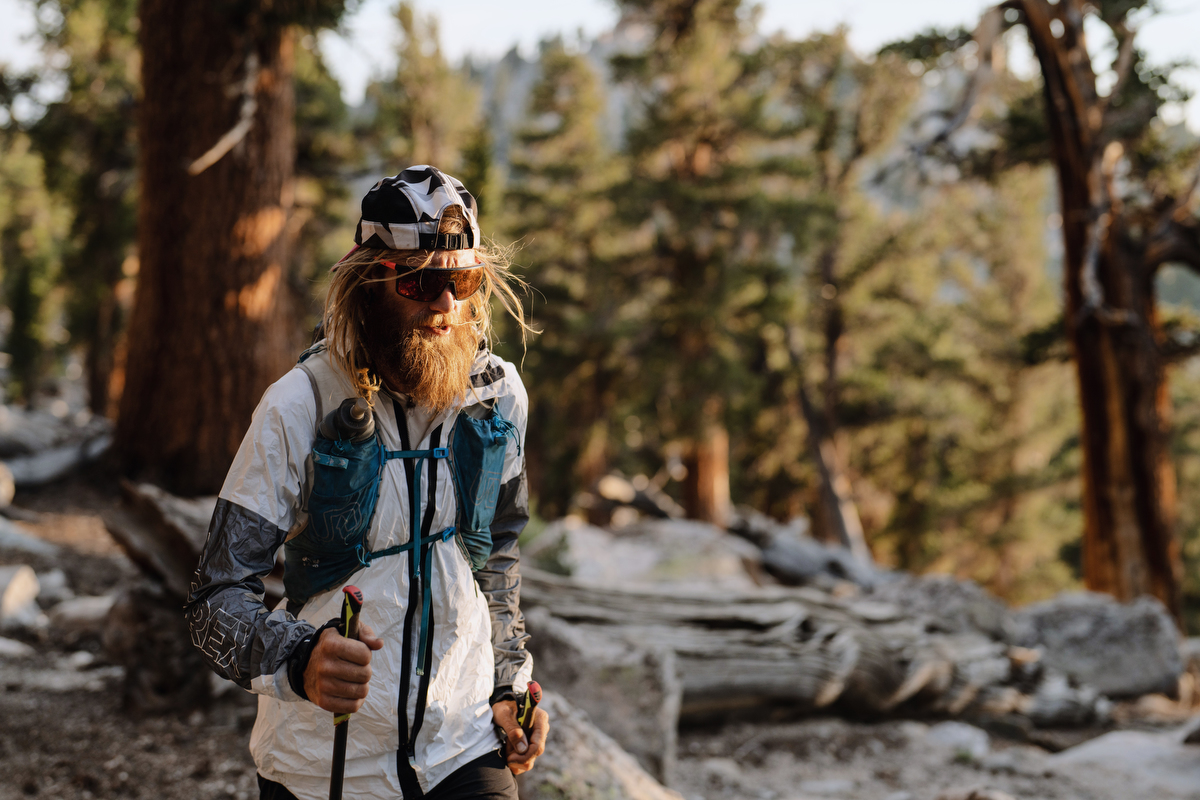
On Physical Challenges
I witnessed miracles daily. Rattlesnakes missing me by millimeters. Walking past cougars, like really close, and them just letting me pass by and ignore me. [There were so many] times that my ankle strained when it should have sprained, or when I jumped six plus feet over this raging river, jumping from one rock to the next when my legs were so tired. I was so depleted that day, and I didn’t know how I was going to get across, and I got across. I realized all these different things in my life [had prepared me for this]. I’m not proud of it, but even when I was addicted to drugs and alcohol and I was smoking a pack of cigarettes [a day]. As we were going through the fires by Mount Shasta I was like, I’ve smoked cigarettes before, so I’ve had lots of smoke in my lungs. I chose to quit [smoking], but my life prepared me for this journey. I witnessed miracle after miracle of something that should have stopped this but didn’t.
I had a really bad calf problem toward the end, where my lateral soleus, I think, was my biggest injury, right before I entered Oregon. My shin [also], my tibialis muscle, I believe, had a rip and was super inflamed for about a week. That kind of led to the backside of [my leg], the muscles that were overused because of that, to turn on me. Toward the end, my calf was just frozen, and in so much pain.
On Spiritual Transformation
The last two weeks specifically, I was transforming into more of an animal. When I finished, I felt more animal than human. Just in how I walked around. I felt more comfortable in nature, sleeping in nature. I remember I woke up one morning from sleeping outside, thinking, I can sleep outside now. [I could] just curl up next to a tree like any other animal, and find my space. And I made peace with whatever happens to me through the night will happen and I’ll either sleep or whatever will happen to me. At first I was nervous about that, and eventually just getting to the point where it’s like, this is what I do. This is what I am.

On Having Family as Crew
From 5 a.m. until midnight was our daily working time. We had a few hours of sleep and then did it all again. Kudos to my whole team. I had to wake up in the morning completely hurt and decide that we’re continuing on, and every one of my teammates did too. They had to decide, we’re going too. I did not do this by myself. This was a whole team effort. I’m so grateful for my amazing crew. I thought it was really cool, how close it brought us even though I didn’t have a lot of time with my wife or kids. I was super inspired by how hard they worked. Especially my wife who is pregnant and just a complete rock star. That was really motivating for me, seeing everyone else working so hard. Not giving up. There was no way I was going to give up. It was like doing a 50-mile race every day for 50-plus days, and they were crewing. Anybody who’s ever crewed knows how hard and exhausting that is.
I had a wife who was pregnant, who was hormonal, and who was doing things way out of her comfort zone. There were nights where she was really struggling, a normal wife who needed a husband. I had to take myself out of the beast mode of, you know, you’re running crazy amounts, you’re not sleeping, you’re running in the woods, and kind of transition from animal to husband and father. I knew that would be kind of challenging going in. It was a part of doing it supported. It was awesome to have the support and have an RV to sleep in and to have warm food, a shower sometimes. Those were amazing, but it’s also bringing my family out on a really hard expedition for themselves. My kids didn’t get to sleep as much and it was really challenging for them. Putting it all together, I thought it was really cool. The reason I did it supported and wanted to do with my family was to share this experience. To not look back on this and be like, oh, look what Dad did this time, but look what we did together as a family. Look what we can accomplish when we work together. I thought that was a beautiful part of the of the story.
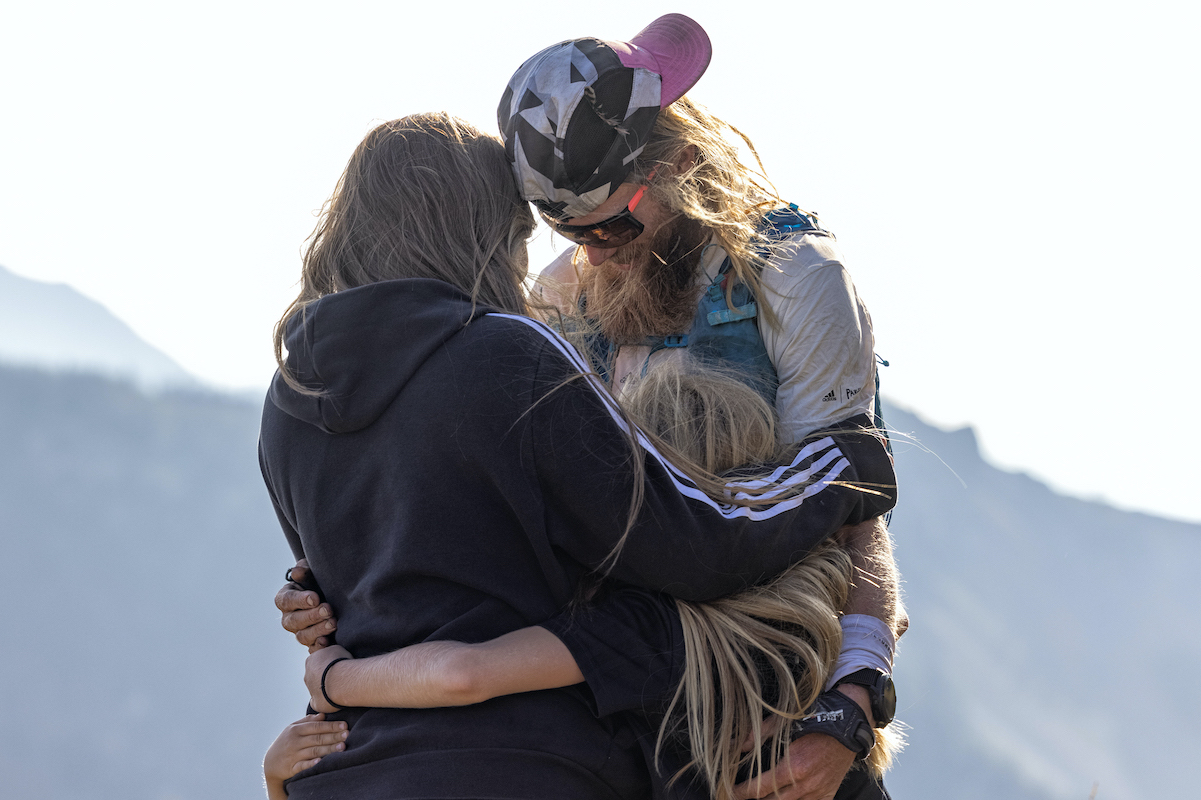
On the Final Miles
The last 30 miles were really hard. The first 10 miles [of that] went kind of smooth and I was actually moving really well. It was this downhill, there weren’t too many downed trees, and I could move. Then my calf started hurting more and more. My calf was hurting so much on the climbs, I felt like I was ripping my calf muscle. With seven miles to go, I was in a world of pain. I was cold. It was windy up top and I just sat down for a moment, took a breath, and had this realization that it didn’t matter how fast I got to the finish. It wasn’t going to be as pretty as I wanted, but I knew I was going to get to Canada.
I was going over these trees and my calf is hurting so much. [I wanted] to scream, “Why can’t it be easy for just a minute?” As I’m screaming this to God or to nature to whatever, I started laughing realized, why would I want it any different? Why would I want this to be easy? I wanted it hard, it had to be hard. There had to be more trees down. It had to be more awkward to get through. It had to be rainy and misty. The trail had to be so overgrown. It didn’t matter that you couldn’t even see the trail within 30 feet of reaching Canada. All of a sudden I could hear Gary Robbins saying, “You’re here! You’re here!” There was screaming and there were lights around. And then all of a sudden there I was, in Canada. I found myself at the finish, I just needed to roar. It was the last purge of everything that this was. [That I had completed] this ceremony of going into this huge thing, of wanting to cleanse myself of all the trials and tribulations of life, to just let them all be accepted, to accept this as my curriculum of life.
